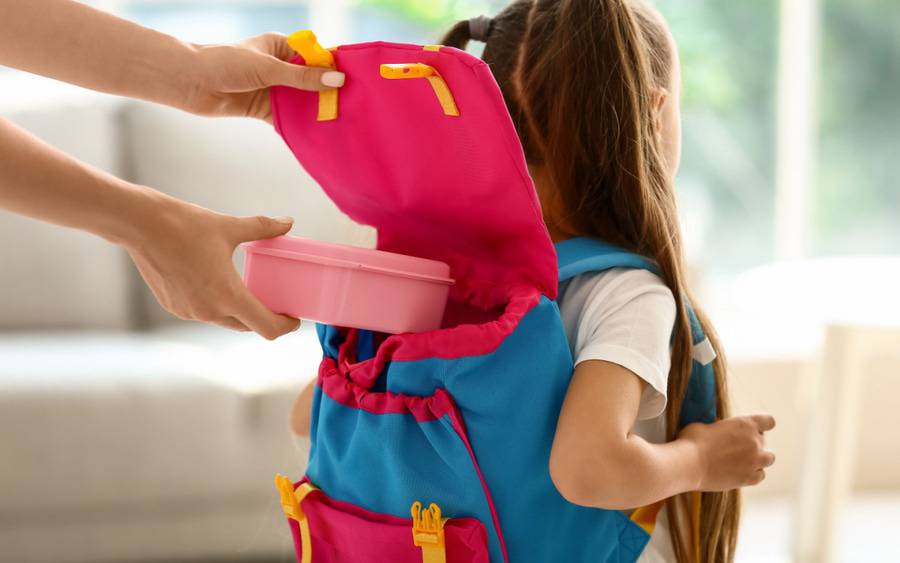6 Healthy School Lunch Ideas for Kids
Tips for making kid-friendly lunches packed with nutrients

Tips for making kid-friendly lunches packed with nutrients
Lunch time is a critical time for kids to get the fuel they need to succeed at school.
“Children need the right foods throughout the day so they can keep learning, playing and growing, and achieving their best at school,” says Shamini Govender, MD, a pediatrician at Scripps Clinic Santee.
Getting kids to eat healthy school lunches can be challenging, however. Kids can be picky eaters and often prefer less healthy options like processed foods and sugary drinks.
Fortunately, there are many strategies and recipes that can help create a healthier lunch box. “It’s about striking a balance between nutrition and taste and creating meals that are easy to prepare and fun to eat,” Dr. Govender adds.
Keep it simple
Creating fresh, nutritious and cost-effective lunches doesn’t have to be complicated.
Follow these six healthy school lunch ideas:
1. Make healthy eating a habit at home
Teach your children healthy habits at an early age and be a role model when it comes to eating healthy. If your kids are accustomed to eating fruits, veggies, lean proteins and whole grains at home, they’re more likely to eat these foods at school.
“When children are used to eating nutritious foods from the five food groups, they are more willing to eat those same foods for lunch no matter where they are, including school,” Dr. Govender says.
2. Let the kids help
Involving your children in packing their lunch can make them more excited about eating it.
Try cooking together using healthy school lunch recipes that are easy and fun. Use the opportunity to teach them about healthy foods.
Depending on their age, they can help cut up veggies, grab fruit from the fridge or pack crackers. They can also spread peanut butter on whole grain bread or assemble their own mini kabobs using toothpicks, cheese and grapes.
3. Give kids a choice
Keep the pantry stocked with healthy staples and post a list of ideas on the refrigerator from which kids can choose.
When packing lunch, ask your child which healthy option they would prefer. This way they can learn about healthy options, while feeling empowered. Perhaps they would prefer an apple to a banana, or maybe they like string cheese more than Greek yogurt.
“By giving them a choice, they learn how to compromise and hone their decision-making skills,” Dr. Govender says.
4. Mix it up
Ensure a balanced diet by using the five food groups as a guide. “Mix and match the various foods to create a well-balanced lunch,” Dr. Govender says.
“Pack a variety of foods instead of the same ones to encourage them to try new foods.”
Include different colors to make the meal more appealing. Create a colorful rainbow wrap with whole-grain tortilla, turkey slices, lettuce, tomatoes, bell peppers and a spread of hummus. Pair this with a side of Greek yogurt or a piece of string cheese for a nutritious and well-rounded lunch.
5. Turn snack foods into a meal
Turn healthy snack foods into an easy-to-pack school lunch meal.
You could create a bento box-style lunch with compartments filled with bite-sized foods. This might include cherry tomatoes, carrot sticks, cubes of cheese, a boiled egg, whole grain crackers and a handful of grapes. The variety will keep your child interested and the balance of nutrients will keep them fueled.
6. Nix juice and soda
It’s no secret that kids love drinking soda and juice. But remember sugary drinks are linked to weight gain. So be mindful of what your children are drinking.
Water is the best drink for them. Consider packing a bottle of water, or a homemade fruit-infused water for a touch of flavor.
Fat-free or 1% milk is also a good option. Juice should be offered in moderation.
Another option: improved cafeteria food
Parents who rely on school cafeteria food for their kids will be pleased to know of improvements made in recent years. School menus are more nutritious and balanced. Many schools now offer a variety of fruits, vegetables, whole grains and lean proteins.
“Review the school’s lunch menu together and discuss which options are the healthiest,” Dr. Govender says.
“Educating children when they are young about making good food choices is one of the best ways to help them develop healthy eating habits that will last them a lifetime.”